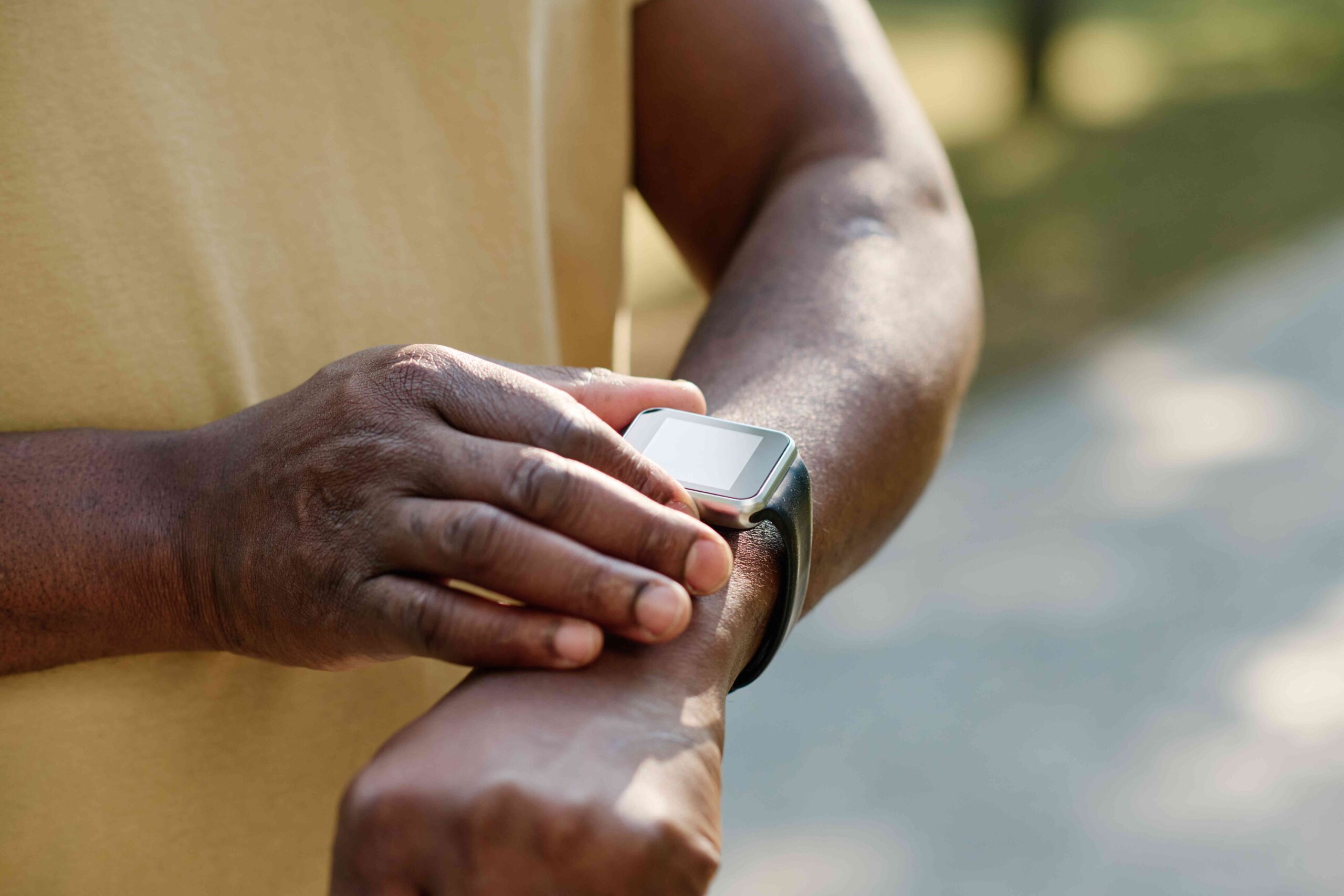:max_bytes(150000):strip_icc():format(jpeg)/Health-GettyImages-1686535258-5a1432f81eb948098ccd8b227e2569c4.jpg)
Smartwatches are a popular way for people to track their health. But new research suggests zeroing in on your daily heart rate and step count—and taking an extra second to crunch those numbers—could provide a clearer view into your cardiovascular health.
Daily Heart Rate Per Step (DHRPS) is a new method of measuring your heart health—it’s calculated by dividing your average daily heart rate by your daily number of steps. The higher the resulting number, the higher your risk of cardiovascular issues.
And DHRPS appears to be a better indicator of cardiovascular health as compared to step count or heart rate alone, according to a new study published on March 29 in the Journal of the American Heart Association.
This equation is essentially a test of the heart’s efficiency, explained study author Zhanlin Chen, a third-year medical student at the Northwestern University Feinberg School of Medicine.
“Our metric, which integrates heart rate and step count, looks at how much harder the heart has to work by raising the heart rate to meet the demand of physiological demand of exercise,” Chen told Health.
If someone’s heart is less efficient, it must beat faster in order to pump blood around the body while they move. Because of this, DHRPS “is a more direct measure of cardiovascular fitness,” said Chen.
To put DHRPS to the test, Chen conducted this new study with other medical students and faculty physicians from Northwestern. The team analyzed electronic medical records and data from about 7,000 people who wore Fitbits.
The results showed that participants with high DHRPS scores were more likely to have conditions such as type 2 diabetes, high blood pressure, heart failure, stroke, coronary atherosclerosis, and heart attack.
In fact, the prevalence of these six conditions was at least 56% higher in those with a high DHRPS score as compared to those with a low DHRPS score.
“We can hopefully use this metric, based on data that we are already collecting from millions of wearables, to screen for individuals at a higher risk for cardiovascular disease,” said Chen.
On their own, average heart rate and daily step count can be good metrics for tracking health. Prior research has found that a higher resting heart rate is linked to a higher risk of heart disease, while a higher daily step count has been associated with fewer adverse cardiovascular events.
But putting the two together, as DHRPS does, provides a “more precise” and “more useful” look at how healthy a person’s heart is, said Mary Greene, MD, cardiologist at Manhattan Cardiology and director of women’s heart health at LabFinder.
The main role of the cardiovascular system is to deliver blood, which carries oxygen, around the body.
“As you’re doing more exercise and physical activity, you’re demanding more from your cardiovascular system. And how it responds to that demand means something clinically,” Christopher Tanayan, MD, sports cardiologist at the Northwell Health Manhattan Eye, Ear, and Throat Hospital, told Health.
The more you’re able to meet those demands—without your heart rate skyrocketing—the more fit your cardiovascular system is.
“A better efficient delivery of oxygen and blood to your muscles is a very good indicator of how healthy a person is,” said Tanayan. “In data and in literature, cardiovascular fitness is associated with a longer lifespan.”
Though experts agree DHRPS can be a good measure of your heart’s efficiency, there are a few limitations, Greene told Health.
For one, DHRPS relies on data from wearable technology such as smartwatches. These may not always provide accurate heart rate and step count measurements.
The metric could also be influenced by outside factors that vary from person to person, Greene said. For instance, if a person takes a drug that lowers or increases their heart rate, then their DHRPS might be inaccurate.
DHRPS also can’t account for the type or intensity of the exercise a person is doing, said Greene, which could impact heart rate responses. Walking 5,000 steps up an incline will raise the heart rate more than walking 5,000 steps on flat ground, for example. Similarly, DHRPS wouldn’t register if a person is carrying something heavy or exercising their upper body.
Finally, Chen added that DHRPS isn’t meant to be used for short-term analysis—it needs to be tracked over time to really show how healthy a person’s cardiovascular system is. That’s why, in their research, they looked at participants’ DHRPS over an average of 192 days of data, he said.
“Naturally, heart rates increase during short-term activities like running, affecting both the numerator and denominator of the ratio,” he said. “This metric was designed to be averaged over longer periods, with a minimum of 10 days.”
A more accurate test might be the cardiopulmonary exercise test (CPET), Tanayan said, which is done in clinical settings. It can assess how a person’s heart and lungs respond to exercise.
“If I want to know how healthy someone is, that is the number that I will pick up,” he said. “It reflects how a well person’s musculoskeletal system, cardiac system, cardiovascular system, pulmonary system, and psychological system are working.”
Though you’ll likely have to grab a calculator, tracking your DHRPS is fairly simple.
To start, get a fitness tracker that accurately measures your heart rate and steps. At the end of each day, you’ll divide your average daily heart rate by your daily step count.
These ratios can get pretty tiny, but according to Chen’s study, a DHRPS of no more than 0.0081 is considered low, while a DHRPS of at least 0.0147 is considered high.
“Keep track of your daily heart rate per step while you engage in a wide variety of different activities
throughout the week,” said Greene.
If you’re consistently seeing high DHRPS scores, Greene recommended the following:
- Engaging in mild-to-intense physical exercises, such as swimming, biking, or running
- Adding resistance training to boost your muscle performance
- Incorporating high-intensity circuit training (HIIT) to make your heart work harder
- Raising the intensity of your exercises or the length of your workouts gradually to challenge your cardiovascular system
“And of course, eat a healthy diet, deal with your stress, and don’t smoke,” Greene said. “Keeping yourself hydrated and getting enough sleep are also good for your heart.”
If you notice drastic changes in your DHRPS, reach out to your doctor.
“[Particularly] if it goes down by a lot, or if your resting heart rate seems to be going up,” Greene said. “This is really important if you exhibit any symptoms, including pain, coughing, or fatigue.”



